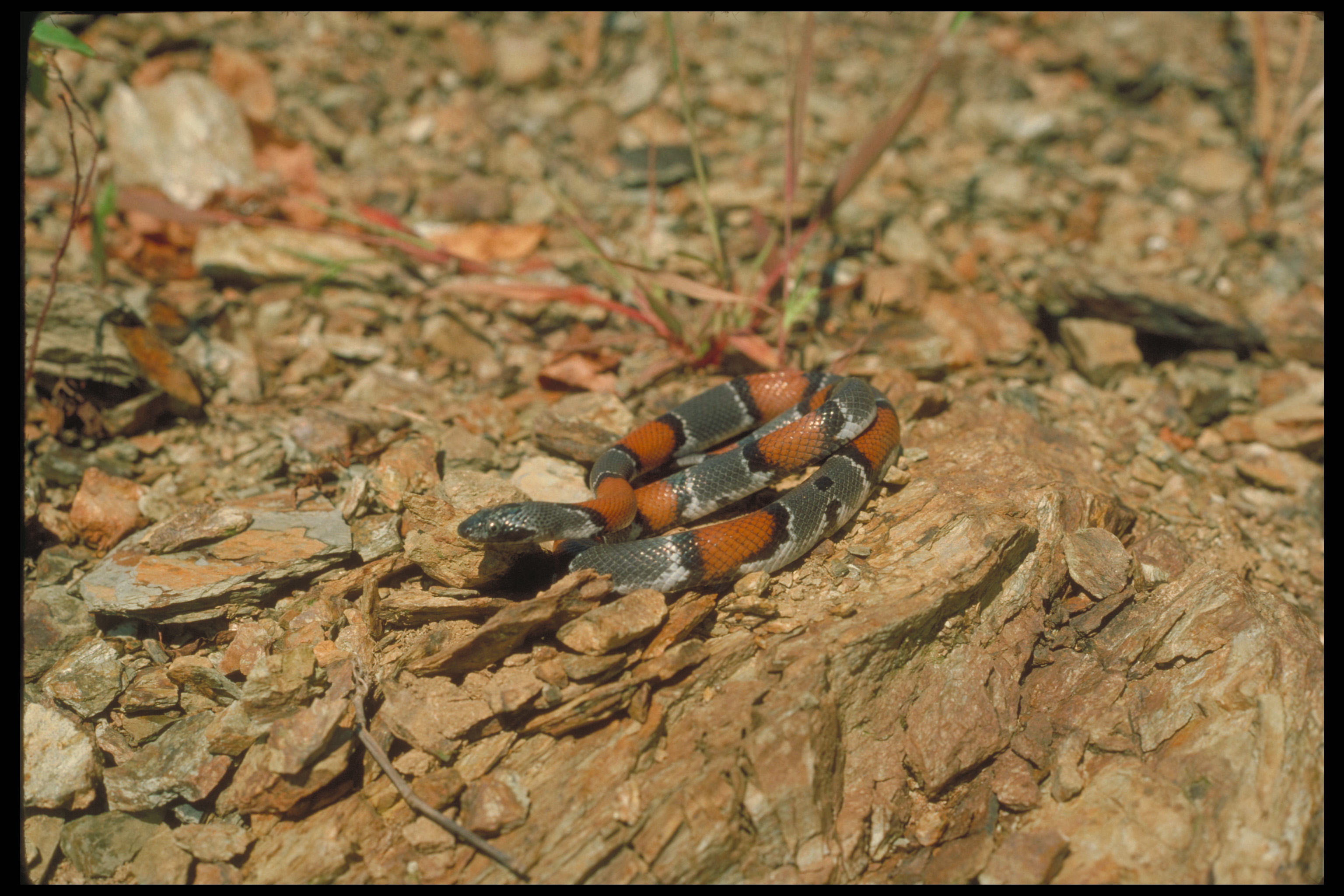
King Snakes
King snakes are on a par with corn snakes as far as popularity goes and the reasons are very similar.
King snakes are available in a wide range of colors, including some amazing-looking albino forms. They're easy to keep, easy to breed, are generally very calm and so are supremely handleable and are the perfect size for the average reptile keeper.
Common in some areas of the United States of America and Mexico there are numerous king snake species commonly available in the pet trade and most are easy to care for.

The standard coloration is a combination of a black or dark brown background with numerous white, cream or yellow stripes going either around the king snakes body or along it's length.
In addition however are varieties with speckling rather than stripes, and stunning red and orange markings.
A particularly beautiful example of the king snake in my eyes is the Mexican king snake or San Luis Potosi king snake (latin name Lampropeltis mexicana mexicana).
Generally preferring drier habitats, king snakes can be found in savannah areas, mountainous regions and sometimes in woodlands.
Therefore in captivity king snakes favour a dry habitat with places to hide away from prying eyes.
As always, a captive bred specimen is a better choice of king snake than a wild caught example due to the reduced chance of parasites being present, and the snake being used to the captive environment and regular handling.
Interestingly, some king snakes will attempt to rattle their tails when surprised or scared, though they aren't related to rattle snakes and this is just a display.
Like the corn snakes this is an ideal snake for both the beginner and the experienced herpetologist and the range of species and colors available means you can keep quite a range of snakes yet the care is very similar between them.
But let's take a little more of a look at king snakes and keeping them successfully in captivity...
Information On King Snakes
Are you looking for information on king snakes in captivity? If so, you've come to the right place!
In captivity king snakes can and should be kept very much like the information provided at this site on keeping corn snakes.
A thermal gradient should be provided with a basking spot of 25-28 degrees C with hatchlings being happy with a small hatchling snake box or aquarium.
It's an important point to remember that snakes are generally secretive animals and providing your king snake with masses of room may well make him or her feel quite uncomfortable.
Whilst I'm not suggesting you keep your king snake in a match box, the best information on king snakes suggests using reasonably small containers - no more than 30cm x 20cm for a hatchling and moving up to around 90cm long by 30-45 cm wide for adults. In addition, ensure there are always hiding places available for your pets.
I personally have found king snakes to be more active than corn snakes and my own specimens have always kept me amused dashing around the cage.
It is important to say that whilst king snakes are not arboreal (unlike some rat snakes they are very strong and can easily crawl some considerable distance up the side of the cage so in contrast to some other information on king snakes I always suggest a reasonably tall cage (30 - 45cm high) and a very tight-fitting lid to prevent escapes.
Indeed, many aquariums (ideal for keeping king snakes in, minus the water obviously) have a small "shelf" of glass a few centimetres below the top of the tank.
This is intended for fish keepers, so they can rest a condensation guard on it to their light fittings don't get damp, but when not used for this purpose, such as when keeping king snakes in them, it is not unusual to look into the cage and spend quite some time worredly looking for your king snake before you realise he's balanaced up on this shelf at the very top of the cage!
It's important to note when discussing information on king snakes that some king snakes can be cannibalistic - that is they may eat other king snakes as well as their normal diet of mice in captivity.
I've never risked putting two king snakes together except for breeding purposes (and even then under close watch!) so have never experienced it myself but I have read numerous stories from both captivity and the wild and so strongly suggest you do as I do and keep your king snakes in solitary confinement otherwise you might end up with a nasty surprise one morning.
You have been warned!
California King Snakes
The california (or californian) king snake (Lampropeltis getula californiae) is one of the most common and widely available king snakes and adheres to the basic pattern of a dark snake with white or cream stripes around it's body.
The albino color form will also sometimes be encountered in the trade - a pink background with cream stripes - quite stunning.
The california king snake should be kept as per all other king snakes.
In the wild california king snakes will eat just about anything - from frogs and lizards to mice and even other snakes and so catering for them in captivity is very easy indeed.